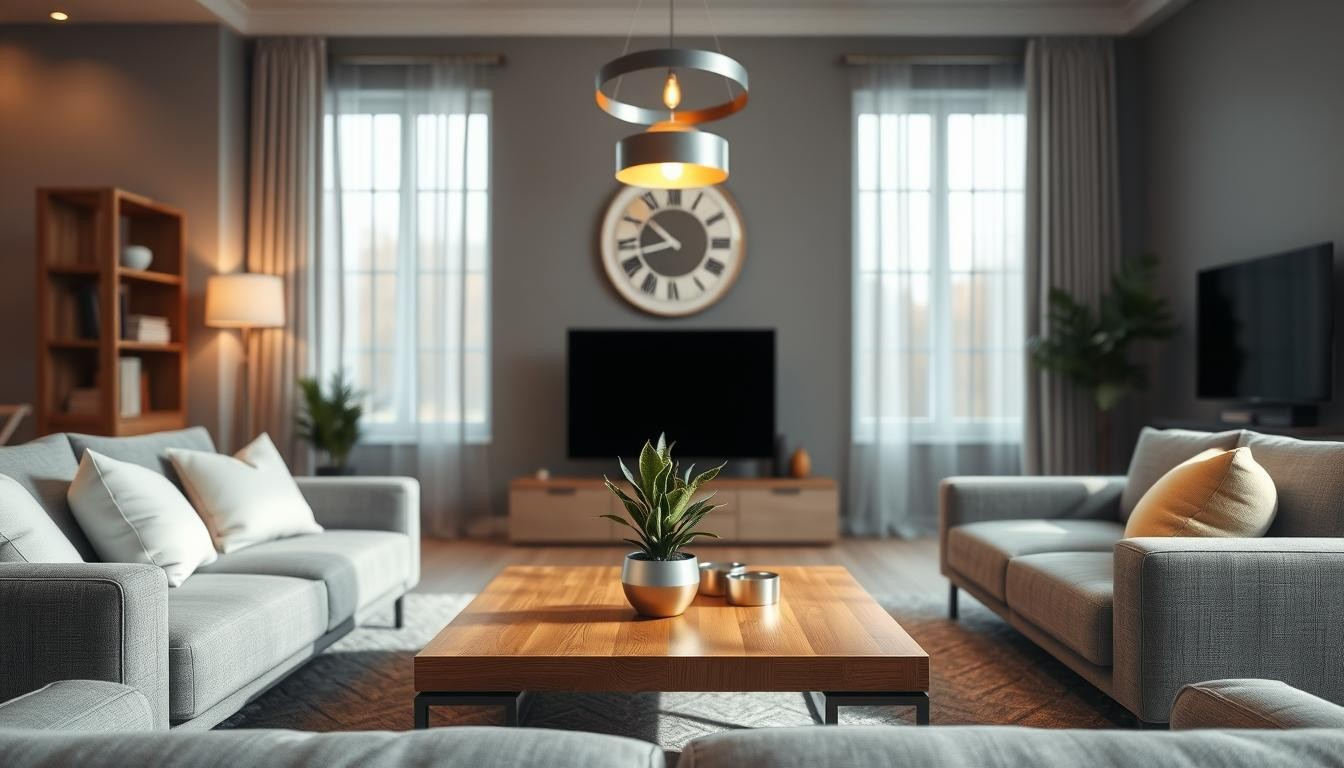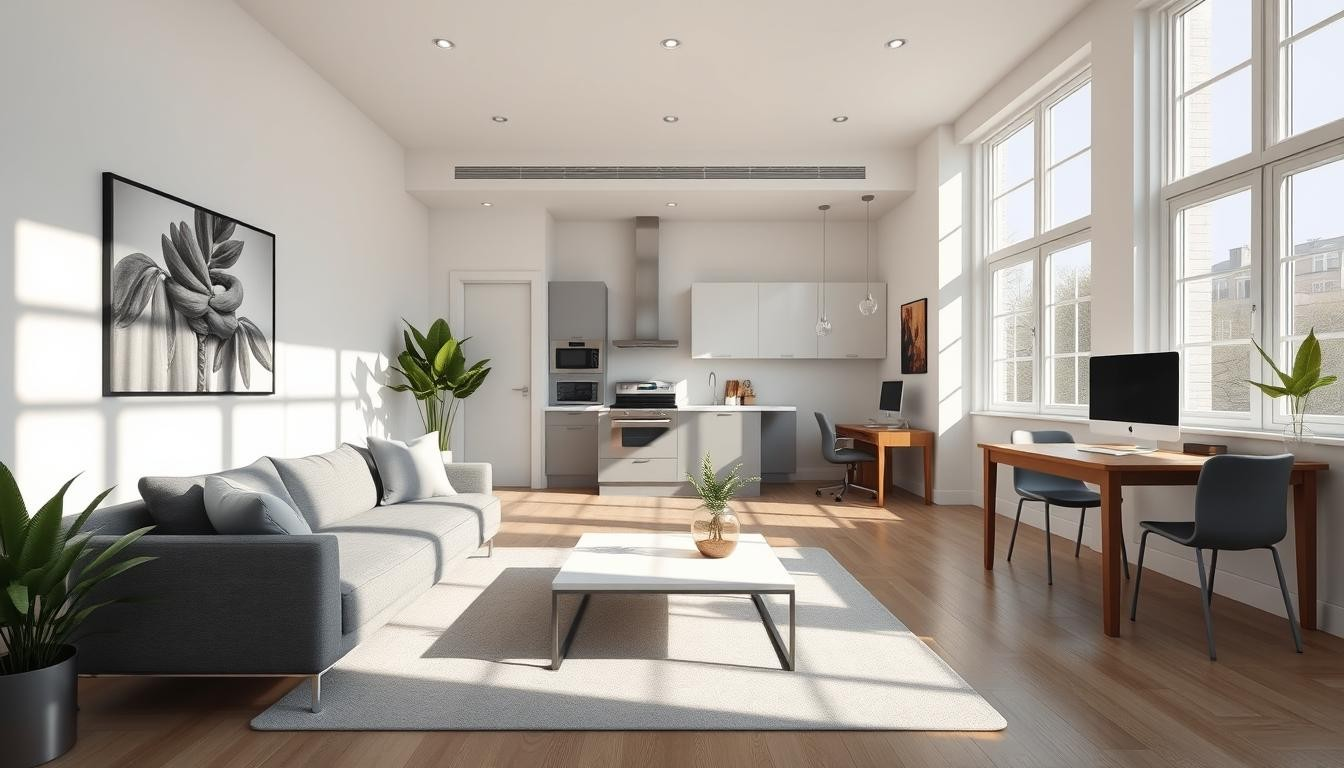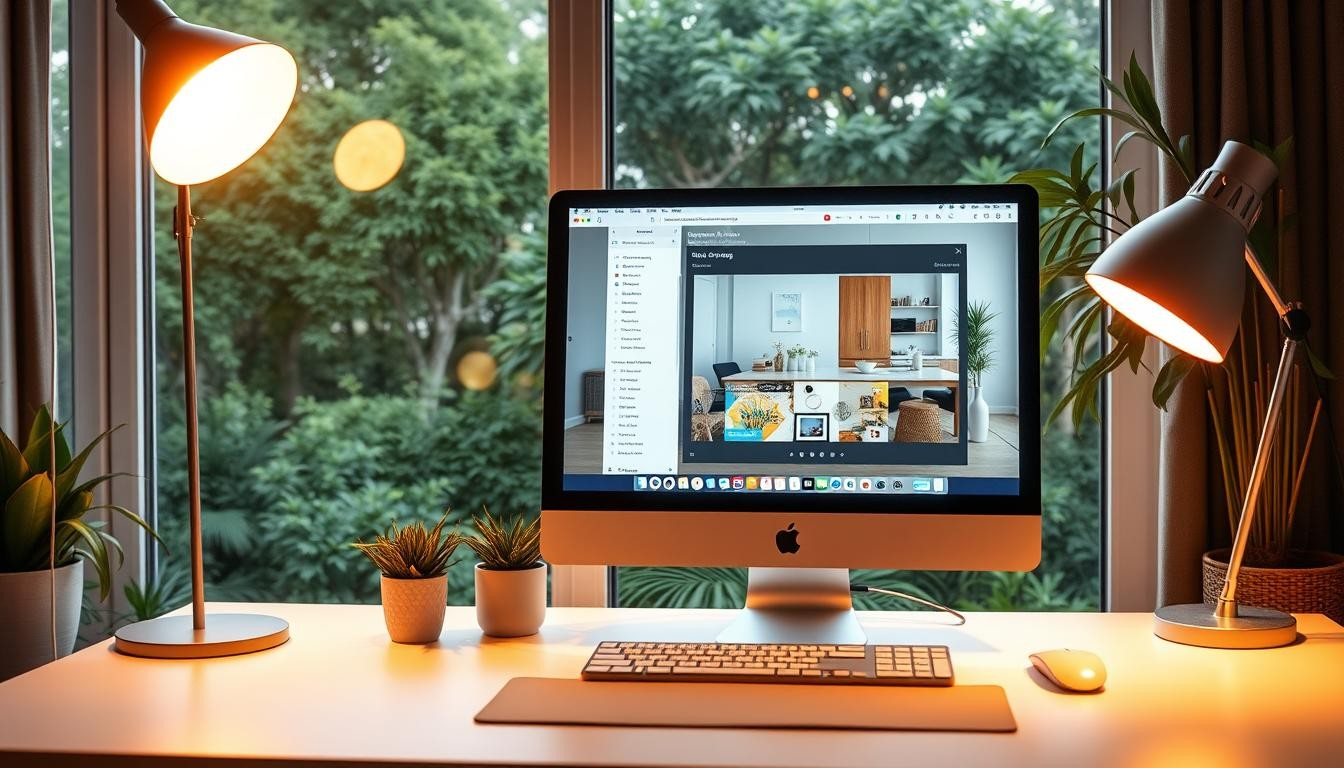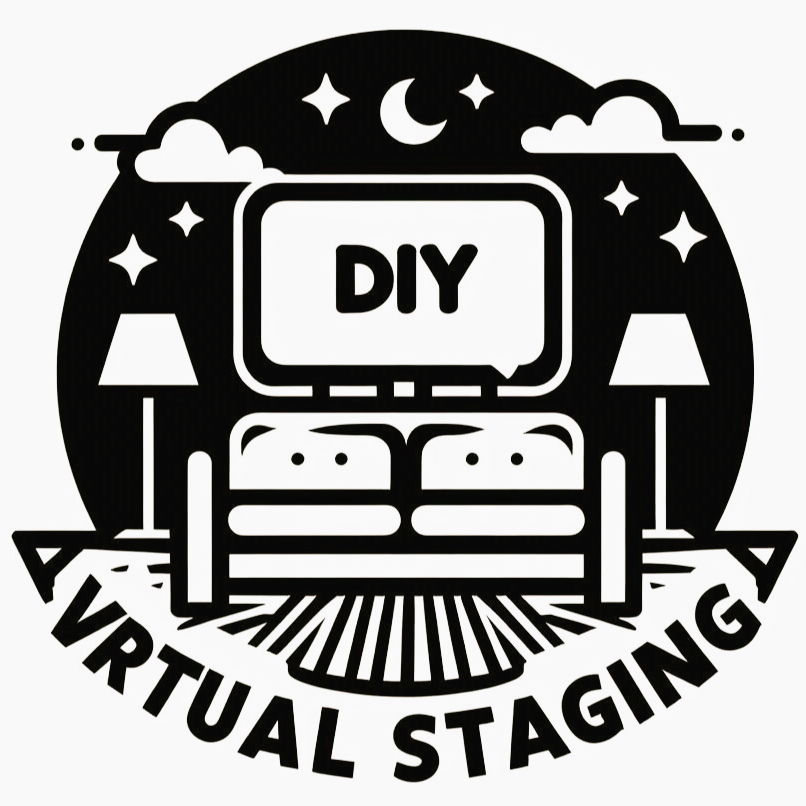Virtual Staging for Beginners: Transform Spaces on a Budget (No Exp)
Transforming empty spaces into beautiful areas might seem expensive or hard. But, virtual staging for beginners makes it easy and affordable. It lets you turn empty rooms into fully decorated spaces. This way, potential buyers can see the property's potential without spending a lot.

Virtual staging helps unlock a property's full potential. It makes spaces more appealing to buyers. Whether you're in real estate, own a home, or manage properties, it's a great tool. It lets you create inviting spaces without the cost of real furniture or decor.
Key Takeaways
Virtual staging for beginners is a cost-effective way to transform empty spaces into beautiful and inviting areas
Budget-friendly virtual staging allows you to create stunning visuals that showcase a property's best features
Virtual staging can help drive interest and sales by making a property more attractive to potential buyers
Virtual staging for beginners is easy to use and accessible, requiring no prior experience or large budget
Transform empty spaces into fully furnished and decorated rooms with virtual staging
Virtual staging can be used by real estate agents, homeowners, and property managers to showcase a property's potential
Understanding Virtual Staging: Your Gateway to Property Enhancement
Virtual staging is a big deal for property marketing. It lets you turn empty spaces into beautiful, furnished areas that grab buyers' attention. You don't need experience to do it. Just follow some virtual staging tips and techniques to make your properties stand out.
Virtual staging is a smart way to make property listings better. It uses virtual staging tips and techniques to create amazing images. These images show off a property's best features. It saves time and money and lets you show off different styles and furniture.
Some key benefits of virtual staging include:
Increased buyer engagement and interest
Improved property listings with high-quality images
Reduced staging costs and time
Enhanced ability to showcase different design styles and furniture arrangements

Learning virtual staging techniques can help you attract more buyers. It's key for real estate agents, property owners, and marketers to succeed today. Stay ahead by using virtual staging in your marketing.
Essential Tools and Software for Budget-Friendly Virtual Staging
For affordable virtual staging, the right tools and software are key. You can find many options that help you create professional-looking results without spending a lot. You'll need a computer with a good processor, a graphics card, and lots of storage.
Popular software for virtual staging includes Adobe Photoshop, SketchUp, and RoomSketcher. These tools have features like easy virtual staging tricks like dragging furniture and adjusting lights. You can also use free software like GIMP or Canva for amazing virtual stagings.
Here are some key features to look for in virtual staging software:
User-friendly interface
Wide range of furniture and decor options
Advanced lighting and texture controls
Collaboration tools for working with clients or team members

By choosing the right tools and software, you can improve your virtual staging skills. This way, you can offer your clients stunning, affordable virtual staging solutions. Pick software that fits your budget and needs. Don't be afraid to try different options to find what works best for you.
Getting Started: Basic Requirements for Virtual Staging Success
To start in virtual staging, knowing the basics is key. You'll need the right equipment and software for top-notch results. Whether you're new or have experience, the right tools and knowledge are essential.
For virtual staging ideas, the options are vast. But, you'll need good photography gear. This includes a camera, tripod, and lighting. Also, pick software easy to use, like Adobe Photoshop or SketchUp.
Creating a good workspace is also important. You'll need a comfy area, a solid computer, and a good monitor. Organize your tools and software well. This will help you make stunning virtual stagings that highlight properties well.
Invest in good photography equipment, including a camera, tripod, and lighting kit
Choose software suitable for beginners, such as Adobe Photoshop or SketchUp
Set up a functional and comfortable virtual staging workspace
By following these tips and trying out diy virtual staging, you can make beautiful virtual stagings. They help sell properties fast and efficiently. Always keep your virtual staging ideas fresh and creative. Don't hesitate to try new techniques and software.
Virtual Staging for Beginners: Transform Empty Spaces on a Budget
As a beginner in virtual staging, you can transform empty spaces into beautiful areas. This is done by using the right techniques and tools. It's all about making spaces welcoming for potential buyers or renters.
Step-by-Step Staging Process
The virtual staging process has several steps. These include:
Photographing the empty space
Selecting the right furniture and decor
Using software to stage the space virtually
By following these steps, you can make a space look and feel like a real, furnished room.
Design Principles for Virtual Staging
There are key design principles for virtual staging. These include:
Balance and proportion
Color and texture
Lighting and shadow
Using these principles, you can create a space that looks inviting and appealing.
Working with Different Room Types
Different rooms need different virtual staging approaches. For instance, a living room might need a different layout than a bedroom. Knowing the unique needs of each room helps you create a space that meets the needs of potential buyers or renters.
Room Type | Virtual Staging Approach |
|---|---|
Living Room | Focus on creating a welcoming and comfortable atmosphere |
Bedroom | Emphasize relaxation and tranquility |
Virtual staging is a powerful tool for transforming empty spaces into beautiful areas. By following the right techniques and principles, you can create a space that appeals to potential buyers or renters and helps you achieve your goals.
Budget-Friendly Virtual Staging Techniques and Tricks
Exploring virtual staging means learning to do it on a budget. With virtual staging tips, you can turn empty spaces into beautiful, welcoming areas. Lighting is a key part of this, changing a room's feel.
Adjusting lighting, colors, and textures can make a room feel cozy and inviting. Adding props and accessories can also add character without costing much. Some ways to save include:
Using free or low-cost virtual staging software
Getting creative with furniture and decor you already have
Trying out different colors and textures
These budget-friendly methods can help you create professional-looking designs without spending too much. Keep up with the latest budget-friendly virtual staging trends to get better and stay competitive.
With time and effort, you'll get good at using these tips. You'll create stunning, affordable designs that impress clients and help sell properties.
Common Virtual Staging Mistakes and How to Avoid Them
Exploring virtual home staging techniques is exciting, but knowing common mistakes is key. These errors can lower the quality of your virtual homes. By avoiding these pitfalls, you can improve your skills and make your virtual stagings more realistic and engaging. This way, you can show off properties in their best light without spending too much.
Attention to detail is vital in virtual staging. Lighting and shadow errors can make a space look unnatural. To fix this, make sure the lighting in your staged rooms is balanced and matches the natural light. This will make the space feel more real and inviting to potential buyers.
Another mistake is scale and proportion issues. Furniture that's too big or too small can ruin the look of a room. To prevent this, measure the space carefully and choose furniture that fits well. This will make your staging look cohesive and realistic, highlighting the property's potential.
By being aware of these mistakes and working to improve your skills, you can create amazing virtual stagings. These stagings will help properties stand out in a busy market. And you can do it all while keeping costs low with affordable virtual staging options.
Maximizing Impact: Style Guidelines for Virtual Staging
Virtual staging is all about style guidelines. With easy virtual staging tricks and diy virtual staging methods, you can make any space look amazing. Focus on details and styling to get a cohesive look.
Creating a welcoming space is key in virtual staging. Use color theory basics to pick colors that match the room's style. Mix warm and cool tones for a balanced feel.
Choose furniture that fits the room and each other well
Add accessories that match the room's style and colors
Focus on lighting and texture for a realistic feel
By following these guidelines and using easy virtual staging tricks and diy virtual staging techniques, you can create stunning virtual stagings. They will impress buyers and make a lasting impression.
Time-Saving Virtual Staging Shortcuts for Beginners
Starting with virtual staging can be exciting. You'll find many ways to improve your skills and work faster. Using pre-made templates is a great way to save time. This lets you focus on making your designs perfect.
For beginners, making your workflow smoother is key. Look for online tutorials and webinars to learn more. Also, try different software to find what works best for you. This way, you can create stunning virtual stagings that wow your clients.
Here are some shortcuts for beginners:
Use pre-made furniture templates to save time on design
Learn from online tutorials and webinars to improve skills
Focus on one room at a time to streamline the staging process
By using these shortcuts, you'll work more efficiently. Remember, the secret to getting better at virtual staging is to keep practicing. Stay updated with new trends and techniques too.
Marketing Your Virtually Staged Properties
After finishing your virtual staging project, it's key to show off your work well. This is where marketing your virtually staged properties comes in. By using virtual staging tips and virtual home staging techniques, you can build a strong online presence. This will help attract potential buyers.
To get started, consider these strategies to promote your virtually staged properties:
Use social media to share top-notch images and virtual tours of your staged properties.
Make sure your listings on real estate platforms are optimized for maximum visibility.
Create a client presentation that shows the benefits of virtual staging and how it can improve the selling process.
By using these strategies, you can market your virtually staged properties well. This will help attract potential clients. Always think about your target audience and tailor your marketing approach to them. With the right virtual staging tips and virtual home staging techniques, you can boost your marketing efforts. This will help you succeed in the competitive real estate market.
Conclusion: Launching Your Virtual Staging Journey
Virtual staging is a great way to make empty spaces look amazing without spending a lot. You now have the tools and knowledge to start your virtual staging journey. This will help you improve how you market properties.
Whether you work in real estate or want to sell your home, virtual staging is very useful. You can pick the best furniture and decor. You also learn about lighting and shadows to make your virtual spaces look great.
Virtual staging is more than just making a space look good. It's about telling a story and making people feel something. It helps buyers imagine living in the property. Using virtual staging can open up new ways to market properties and lead to more sales.
So, why wait? Dive into virtual staging today and see what you can do with your properties. With some creativity and the right tools, you can turn empty spaces into amazing places that grab people's attention.
FAQ
What is virtual staging?
Virtual staging is when you digitally add furniture and decor to empty spaces. It makes a vacant property look inviting and appealing. You don't need real furniture or decor to do this.
What are the benefits of virtual staging compared to traditional staging?
Virtual staging is cheaper and doesn't need physical setup. It's also easier to change designs. Plus, you can share it online, which helps market properties better.
How can virtual staging transform property marketing?
It makes properties look better online. This helps potential buyers or renters see the space's potential. It can lead to more interest, higher offers, and faster sales or rentals.
What essential tools and software do I need for budget-friendly virtual staging?
You can use free or paid software like Photoshop, Homestyler, or Planner 5D. Choose tools that fit your budget and skill level. This way, you can make professional-looking stagings without spending a lot.
What basic requirements do I need to get started with virtual staging?
You'll need a good camera, lighting, and a tripod for photography. Pick software or tools that match your skill and budget. Having a dedicated workspace also helps you work better.
What are some budget-friendly virtual staging techniques and tricks?
Use lighting and shadows wisely, and pick textures and colors carefully. Adding affordable virtual props can also help. These tricks can make your stagings look professional without costing too much.
What are some common virtual staging mistakes and how can I avoid them?
Mistakes include wrong lighting, scale issues, and unrealistic furniture. Pay attention to details and understand scale. A cohesive and realistic staging environment is key.
How can I maximize the impact of my virtual stagings?
Use color theory, choose the right furniture, and accessorize well. Focus on details and a cohesive style. This will make your stagings more appealing and effective.
What are some time-saving virtual staging shortcuts for beginners?
Use pre-made templates and online resources. Streamline your process to work more efficiently. These shortcuts help you create high-quality stagings faster.
How can I effectively market my virtually staged properties?
Use social media and real estate marketing channels. Create compelling presentations. Showcasing your work well can attract clients and show the power of virtual staging.
